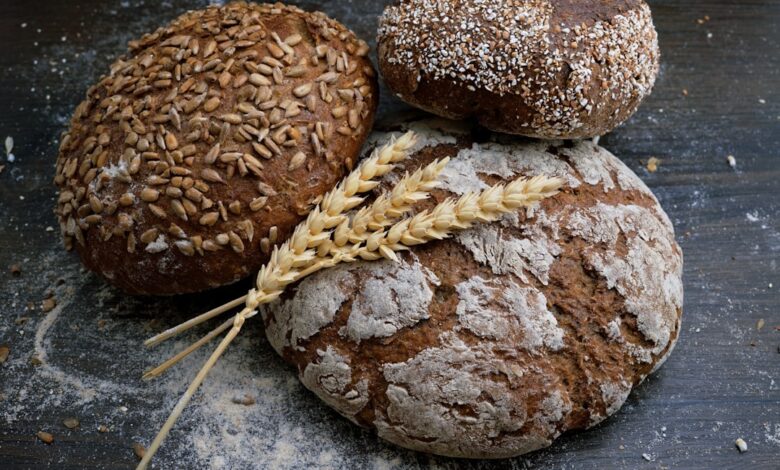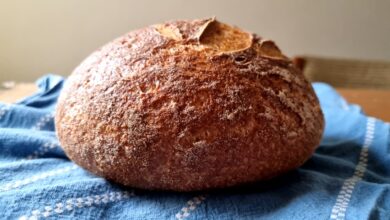Best Gluten-Free Bread

Finding the perfect gluten-free bread can feel like a never-ending quest. If you’re avoiding gluten due to celiac disease, gluten sensitivity, or personal preference, you know the struggle is real. So many gluten-free breads are dry, crumbly, or just plain… blah. But don’t worry, fellow bread lovers! I’m here to help you navigate the gluten-free bread aisle and find some truly delicious options.
As someone who’s tried countless gluten-free breads, I’ve learned a thing or two about what makes a loaf great. It’s not just about being gluten-free; it’s about taste, texture, and how well it holds up to making sandwiches, toast, or even just enjoying with a pat of butter.
What Makes a Good Gluten-Free Bread?
Before we dive into specific brands, let’s talk about what qualities to look for in a top-notch gluten-free bread. After all, knowing what to look for is half the battle!
First, texture is key. Nobody wants a bread that crumbles into dust with every bite. Look for a bread that’s soft, slightly chewy, and holds its shape well. A good gluten-free bread should be able to withstand being sliced and spread with your favorite toppings without falling apart.
Next up is taste. This might seem obvious, but it’s worth emphasizing. Many gluten-free breads have a distinct, sometimes unpleasant, flavor. The best ones have a neutral or slightly nutty flavor that complements other ingredients. Avoid breads that taste overly processed or artificial.
Ingredients matter, too. Look for breads made with a blend of gluten-free flours, such as rice flour, tapioca starch, potato starch, and sorghum flour. Some breads also include ingredients like flax seeds, chia seeds, or psyllium husk for added fiber and nutrients. Be mindful of any added sugars or preservatives if you’re trying to limit those in your diet.
Finally, consider the size and shape of the loaf. Some gluten-free breads are smaller than traditional breads, which can be a bummer if you’re making sandwiches. Look for loaves that are a decent size and have a shape that’s easy to work with.
Top Gluten-Free Bread Brands
Okay, let’s get to the good stuff! Here are some of my favorite gluten-free bread brands, based on taste, texture, and overall quality:
Canyon Bakehouse: This brand is a consistent winner. Their breads are soft, flavorful, and have a texture that’s surprisingly close to traditional wheat bread. Canyon Bakehouse offers a variety of options, including gluten-free bread, gluten-free hamburger buns, and gluten-free everything bagels. Their Mountain White bread is a great all-around choice, perfect for sandwiches and toast.
Schar: Schar is a widely available brand that offers a range of gluten-free products, including bread. Their Artisan Baker White Bread is a popular choice, known for its soft texture and mild flavor. Schar also offers other varieties, such as multigrain and sourdough, so you can find something to suit your taste.
Little Northern Bakehouse: This brand focuses on creating gluten-free and allergy-friendly breads. Their loaves are made with whole grains and are free from artificial ingredients. Little Northern Bakehouse’s breads are a good source of fiber and nutrients, making them a healthy option. The Seeds & Grains loaf is a flavorful and satisfying choice.
BFree: BFree is known for its soft and pliable wraps and breads. They use a unique blend of ingredients to create products that are both gluten-free and delicious. Their Soft White Rolls and Brown Seeded Rolls are great for burgers, sandwiches, or enjoying with a meal.
Rudi’s Gluten-Free Bakery: Rudi’s offers a variety of gluten-free breads, including sandwich bread, hamburger buns, and hot dog rolls. Their breads are known for their soft texture and mild flavor. Rudi’s Gluten-Free Multigrain Bread is a good source of fiber and whole grains.
Tips for Enjoying Gluten-Free Bread
Even the best gluten-free bread can benefit from a little extra TLC. Here are some tips to help you make the most of your gluten-free bread:
Toast it: Toasting gluten-free bread can help improve its texture and flavor. Toasting adds a bit of crispness and brings out the nutty notes in the bread.
Store it properly: Gluten-free bread tends to dry out quickly, so it’s important to store it properly. Keep it in a sealed bag or container at room temperature or in the refrigerator. You can also freeze it for longer storage.
Get creative with toppings: Don’t be afraid to experiment with different toppings to add flavor and moisture to your gluten-free bread. Try avocado, hummus, nut butter, or your favorite sandwich fillings.
Use it in recipes: Gluten-free bread can be used in a variety of recipes, such as French toast, bread pudding, or croutons. Using it in recipes is a great way to use up leftover bread and add flavor and texture to your meals.
Homemade Gluten-Free Bread
If you’re feeling ambitious, you can also try making your own gluten-free bread. There are tons of recipes available online and in cookbooks. Making your own bread allows you to control the ingredients and customize the flavor to your liking. It can be a bit of a learning curve, but the results can be well worth the effort.
Gluten-Free Bread: Safety Considerations
It’s really important to check the labels of gluten-free bread carefully if you have celiac disease or a severe gluten sensitivity. Look for products that are certified gluten-free, meaning they’ve been tested and found to contain less than 20 parts per million of gluten. Also, be aware of potential cross-contamination in your kitchen. Use separate cutting boards, toasters, and utensils for gluten-free and gluten-containing foods.
Frequently Asked Questions
Is gluten-free bread healthy?
Whether or not gluten-free bread is healthy depends on the ingredients. Some gluten-free breads are made with refined starches and added sugars, while others are made with whole grains and nutritious ingredients. Look for breads that are high in fiber and low in added sugars and unhealthy fats.
Why is gluten-free bread so expensive?
Gluten-free bread tends to be more expensive than traditional bread because the ingredients used to make it are more costly. Gluten-free flours, such as rice flour and tapioca starch, are typically more expensive than wheat flour. Also, the production process for gluten-free bread can be more complex, which can also contribute to the higher price.
Can I make gluten-free bread in a bread machine?
Yes, you can make gluten-free bread in a bread machine. Look for recipes specifically designed for bread machines, as they will have the correct ratios of ingredients and instructions. Be sure to use a gluten-free bread machine cycle, if your machine has one.
How can I prevent my gluten-free bread from being dry?
To prevent gluten-free bread from being dry, try adding moisture-rich ingredients to the dough, such as applesauce, mashed banana, or yogurt. You can also add a little bit of oil or butter to the dough. When baking, avoid over-baking the bread, as this can cause it to dry out. Store the bread in a sealed bag or container to prevent it from drying out after baking.
Ultimately, the best gluten-free bread is the one that you enjoy the most. Don’t be afraid to try different brands and varieties until you find your perfect loaf. With a little bit of experimentation, you’re sure to discover a gluten-free bread that you love.



